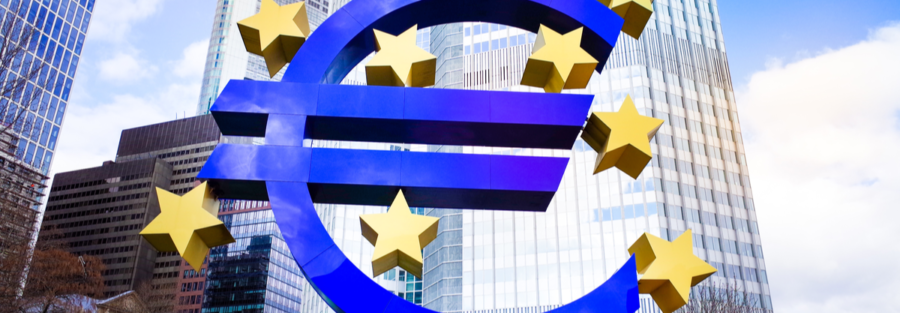Regulation – sustainAX answers to ESMAs Call for Evidence on market characteristics for ESG Rating Providers in the EU
As there are not that many ESG score (aka ESG “rating”) providers out here, we think there can be interest for the other stakeholders like the users of ESG scores (asset managers) and companies being ESG researched and ESG scored to see what we as provider have answered to ESMAs “Call for evidence om market characteristics for ESG Rating Providers in the EU”.
It will also give you an insight on how we work with ESG research, ESG scoring, how we deal with conflict of interests and what we think of the future of ESG scores.
Do not hesitate to contact us should you have questions.
In the following we have pulled out the textual answers relevant to our approach and thoughts.
sustainAX answers to ESMA:
6.1.1 Background information
Q 9: Please describe the aspects and features of an issuer or entity’s profile your ESG ratings assess, and the criteria considered.
First of all, we do fundamental ESG research and the ESG score is only a numerical representation of the residual ESG risk of the company researched. We disagree with the term «rating» as it makes users think of credit rating, an important difference between these two is that ESG risk is only a partial risk input for the investment case and should be used as such. When we talk about ESG risk it includes extra-financial risks and opportunities.
The sustainAX fundamental ESG risk research process consists of the following main steps:
- Work to understand the companies’ own activities; what is(are) relevant sector(s) and where are the boundaries up until where the suppliers’ processes are in play and from where the clients are taking over? With other words what is the exact activities of the company. Different activities have their own group of typical ESG risks. The identified activities and sector(s) will therefore have an important impact on the materiality (the importance of the different ESG risks).
- The research is split in Environmental, Social and Governance factors. For each of these we have under groups representing typical ESG research focus and taking all stakeholders into account. Within each under group, we have a certain number of sub factors we assess to understand the residual ESG risk. See our ESG risk library here: https://www.sustainax.com/index.php/different-types-of-esg-risks/
- The fundamental ESG research is summarised with a conclusion text pointing to the main risks, suggestions of ESG risk integrating areas for the investors (ref SFDR Art 6) and an engagement question list that addresses the residual ESG risks we have identified.
The ESG scoring process works like this:
- The above-mentioned sub factors are the metrics we score (raw metric level ESG data). The selection of metrics scored for a company will to a certain extent rely on the sector(s) where the company belong. The number of individual metrics count over 100, but the number of metrics used for our ESG scores are lower per sector as some of the metrics are sector specific (materiality based) and hence not relevant for all companies. We score more metrics than we currently use for our own ESG scores.
- For the ESG score and the E, S and G scores, we aggregate up using metric weights. The metric weights are reflecting materiality relevant to the company, this based on the sector(s) and activities of the company. As some companies may be active in several or between sectors, we have an overlay to ensure that such situations are reflected in the ESG score.
- The ESG scores are absolute and range from 0 to 100, where 0 represents the highest ESG risk (worst from a risk perspective).
Sources of information
- Our ESG research input is based solely on public company sources. That is mainly, but not exclusively, annual reports, sustainability and CSR reports, company webpages, and other relevant public company communication. This can for smaller and younger companies exceptionally include investor presentations that may only be available on request.
- For incident and controversy research we also use other sources like web pages of other non-company providers like newspapers, NGOs, etc.
- We consider that only information that the company has communicated through public channels and available for all stakeholders carry enough weight to be included as input to our ESG research.
Q10. Please describe the purposes for which you consider your ESG ratings would be suitable.
- ESG Risk Integration
ESG scores (see above on why we use «score» and not «rating») are only simple numerical representations for a fundamental ESG research report’s conclusion that states the residual ESG risk of the researched company. ESG scores is not a final tool in itself, they should only be used for what it is; a simple indicator of a company’s residual ESG risk taking into account the sector’s materiality. We recommend our clients as a first process improvement step from just considering the ESG score, to extend their watch to E, S and G scores separately. This because one high score among E, S and G scores may hide another score that is low and hence hide the warning signal of an ESG risk the portfolio manager should study closer. This is also true on the under group and metric level (see definition of these in question 9).
When an investor uses the ESG scores correctly, any warning levels (reflecting high ESG, E, S and/or G risk) should be followed up by studying the fundamental ESG report, where the investor will understand the residual ESG risks leading to the ESG score triggering the action.
Once these risks understood, the ESG Risk Integration (ref. SFDR Art 6) can happen. ESG risk integration will merge financial risk and extra-financial risks into total risks and will give the investor a full view of the company’s risks and opportunities.
Theoretically, ESG risk integration should be done for all the investee companies, but in real life the work begins where the ESG risk is considered the highest. (This is what we see being practiced). When ESG risk integration is practiced properly, the portfolio manager has an understanding of the combined financial and extra-financial (ESG) risks of an investee company and can only then claim ESG risk integration.
- Other SRI strategies like «best in class/sector (based on ESG score)», «better ESG score than index», etc.
- Corporate ESG research access
The companies we are ESG researching can access the ESG research reports including the ESG score. They can use this in two dimensions; 1) get information on what ESG risk conclusions the investors have access to including the ESG score and 2) take action on the residual ESG risks identified in the research report to mitigate these.
Q12: Please describe the mechanisms you have designed and put in place to deal with the identification and management of possible conflicts of interest in relation to your product offerings.
The main potential conflicts of interest are between us and the investor client on one side and between us and the researched company clients on the other side. Both investors and researched companies pay us for research, and as the investor have the companies in their portfolios, they would like to see low levels of ESG risks, as would the companies.
We deal with this in several dimensions:
- Independency versus the researched company and the investor
- We do our ESG research only based on public information (except for investor presentations for companies recently introduced to the market) and have no pre research contact with the researched company. There may be contact when we do not find the required minimum information, but this remains an exception.
- If an investor finds our assessed ESG risk levels to high, private information from the investor (or the company) have no impact on our ESG risk assessment or ESG score. The only way this can have an impact is if the company publishes the additional information through public channels like website, annual reports, etc. In addition to the fact that publicly communicated corporate information carries more weight, it is also a way to make the companies publish more ESG relevant information.
- Timelocks
- Corporate clients, i.e., the companies we have ESG researched, can only access the ESG research report on their company after it has been finalised and published to our investor clients.
- Cross control
- When an ESG research report and ESG score is published, it has been controlled by another Certified ESG Analyst that did not conduct the ESG research on the company in question.
- Methodology
- As we have a defined ESG research methodology and a defined ESG scoring methodology this diminishes the possibility to deviate due to potential pressure from investor clients or corporate clients. Both on an individual and corporate level.
6.1.6 General views on ESG ratings in EU Financial Markets
Q1. Please provide your views on the level of relevance of ESG ratings to EU financial markets and financial market participants. Do you consider this level will increase in the coming years?
ESG scores is the way investors will be able to monitor their portfolios with regards to ESG risks from a top-down angle, but it is as mentioned earlier in this document just an indicator or a potential trigger point for deeper work to understand the underlying ESG risks. It is also used for specific SRI strategies based on ESG scores on a relative basis. It is therefore relevant, and the relevancy will increase as more investors increase the use. Some investors buy ESG scores, but do not really use them today to other things than reporting for their funds. As the SFDR Art 6 will be enforced by FSAs, the real ESG risk integration processes will be implemented, and this will increase the need for ESG research and solidify the need for ESG scores.
This said, a multitude of “alternative ESG scores” provided by web scrapping companies without a fundamental ESG research idea as a base will maybe never be relevant at least for ESG risk integration processes where only the underlying fundamental ESG research can be the base.
Q2. Please provide your views on the level of risk ESG ratings currently pose to orderly markets, financial stability, and investor protection in the EU. Do you consider this level will increase in the coming years?
The most important risk is stemming from the misuse of ESG scores by asset managers. An ESG score is a simple numerical representation of a fundamental ESG research that should not be compared to credit rating (see point above on why the term should be ESG score and not ESG rating). Although methodology will have a lot in common among providers, details will differ, and conclusions diverge also here like you see for traditional Equity research for example. So, we would say “the risk ESG ratings currently pose to orderly markets, financial stability and investor protection in the EU» should be considered the same way as for traditional financial Equity research. There is already a certain overlap and with time they should merge, but not through the numerical ESG score, but through the content of the fundamental ESG research.
By auditing investment firms on their real ESG risk integration (per SFDR Art 6), focus will shift from rather passive «staring» at a numerical ESG score to an active process ensuring an understanding the ESG risk, through the fundamental ESG research, of an investee company and integrating this in investment decisions. Hopefully this will take the focus away from the numerical ESG score and redirect it to the fundamental ESG research.
When ESG risks are integrated in investors’ investment decisions, in corporate strategy and management, it will impact how investors and corporations behave. This will have an impact on markets. As ESG research is contributing positively to risk understanding in the first place, it will diminish risks for “orderly markets, financial stability and investor protection in the EU”. But reducing this to considering a simple ESG score is a mistake.





